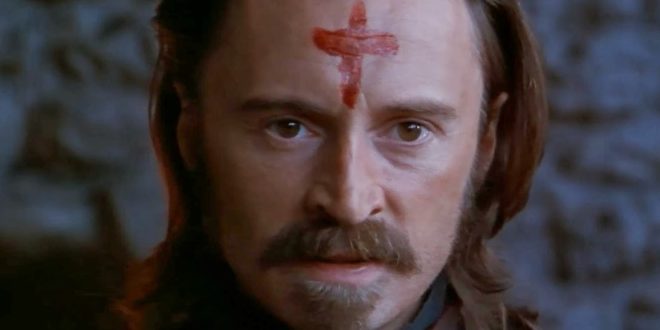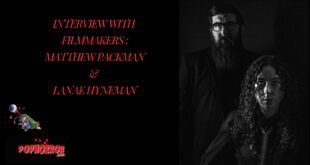I don’t care how a movie does at the box office, or what the critics think. You cannot judge a film solely by either metric. Except when a film is a box office dud and the critics hate it, you could be on to something. With that being said, if you make an assumption on the quality of Antonia Bird’s 1999 film, Ravenous, based on its critical or box office response, you would be flat out wrong. While the film only grossed $2,062,045 on a $12,000,000 budget and currently has a 45% on Rotten Tomatoes, this film, by my personal measurement, is a resounding success. Ravenous is a blend of comedy and horror that stands out as my personal favorite genre film of all time.
In March 1999, I saw Ravenous in a nearly empty theater. After the movie was over, my friend looked at me and said, “That was brilliant. Where is everybody?” Apparently, they went to see Analyze This and Forces of Nature that weekend. Yes, the Ben Affleck Sandra Bullock romantic comedy duked it out with my favorite film that weekend at the box office and somehow kicked its ass.

Story
The opening scene of Ravenous introduces Capt. John Boyd (Guy Pearce), a US soldier fighting in the Mexican-American war who is afraid of dying in battle. Boyde hides underneath the bodies of his fallen comrades,to avoid detection. The blood of his fellow soldiers quickly covers face and fills his mouth while he quietly cries in fear. After struggling for a few moments, the fear subsides. Overtaken by rage, Boyd climbs out from beneath the pile of soldiers. We see a man who is no longer afraid of dying. He is powerful and hell-bent on killing every last one of the enemy forces single-handedly.
Once the General discovers how Capt. Boyd’s conquest was only achievable through an act of cowardice, he has the Captain relocated to a remote post in the high Sierras. It’s immediately clear that Fort Spencer is the Army’s equivalent of The Island of Misfit Toys. A desolate place for the Army to send soldiers to be forgotten. After Boyd has begun to get settled in, Colqhoun (Robert Carlyle) arrives. Frostbitten, in desperate need of food and a warm bath, Colqhoun tells the soldiers of Fort Spencer how he ended up at their post, while he eats and warms himself next to the fire.
He was part of a wagon train that attempted to forge a new and shorter path through the Sierras to the Pacific Ocean. In a short time, the party was lost, and it became clear they would need to find shelter and hunker down for a long winter. With no alternative food sources, the party resorted to cannibalism as a means of survival.

Direction
The film is essentially a battle between two men who have survived by eating flesh, two men who have learned to live with their pasts in very different ways. One man embraces his newfound strength while the other is riddled with guilt. The film strikes a perfect balance between comedy and horror. Many movies have attempted this balance, but very few have been as fully realized as Ravenous. Most sacrifice the scares when going for laughs, or attempt to heighten tension after a comedic moment that inevitably falls flat. The comedy in Ravenous is a natural extension of its horror and tension.
It never feels like the filmmakers are winking at the audience. Well, I take that back. The film opens with two quotes that are a bit self-referential and meta… if you know what the film’s about. The first quote is from Friedrich Nietzsche: “He that fights with monsters should look that he himself does not become a monster.” The second quote is the only overt wink at the audience and is attributed to Anonymous. It simply says, “Eat me.” This is not an example of the type of humor Ravenous deals in, but a reminder not to take the film too seriously. I’m sure some audiences see a period/costume film and assume it should be taken as an earnest tale. Ravenous is not a solemn affair; it’s pure genre joy.
Acting
Robert Carlyle gives a manic performance that is endlessly watchable. Best known as Begbie in Trainspotting, Colqhoun is the character that has left the strongest impression with me. I would (without question) geek out over Ravenous if I ever had the chance to interview him. With so many movies I will never see, I rarely revisit films. But I have seen Ravenous twice this year, and that’s largely due to Carlyle’s performance.
David Arquette is at his oddball best, showing that he can do a great deal with very little, and Guy Pearce is a broken, sad sack of a man that gives the film a conscious. He keeps a batshit crazy film grounded by giving it weight through the depth of his character, never allowing the piece to slip into melodrama. It’s a fairly thankless role that he completely knocks out of the park. In a lesser actor’s hands, you would be pulling against Capt. Boyd, but Pearce injects just the right amount of pathos to keep you on his side.

Music
Damon Albarn and Michael Nyman composed the innovative score for Ravenous. That music goes a long way in solidifying the film as one of my favorites. Nyman’s use of the banjo is somehow warm and unsettling. A gentle and soft sound that is just a bit off-kilter. Something that’s not immediately noticeable but would be apparent under any degree of scrutiny. It beautifully mirrors the film’s multiple tones while never forcefully manipulating the viewer. Apparently, Abarn and Nyman didn’t collaborate on the film as much as they separately submitted themes and cues. I’m not sure if this process was by design. but it gives the film a dynamic quality that’s difficult to pick up on the first time around.
Conclusion
Ravenous is the rare genre mash-up that not only works but manages to make it look easy. If, for some reason, you haven’t seen Ravenous, do yourself a favor and remedy that immediately.
 PopHorror Let's Get Scared
PopHorror Let's Get Scared




